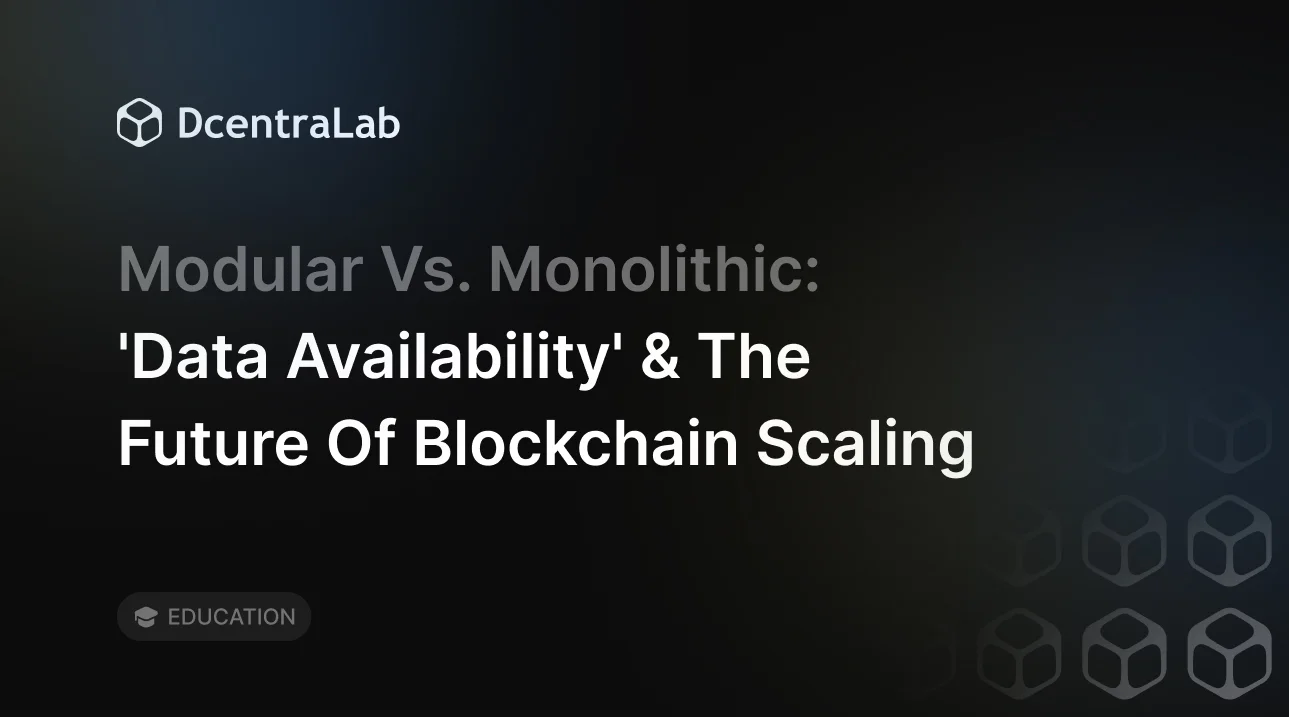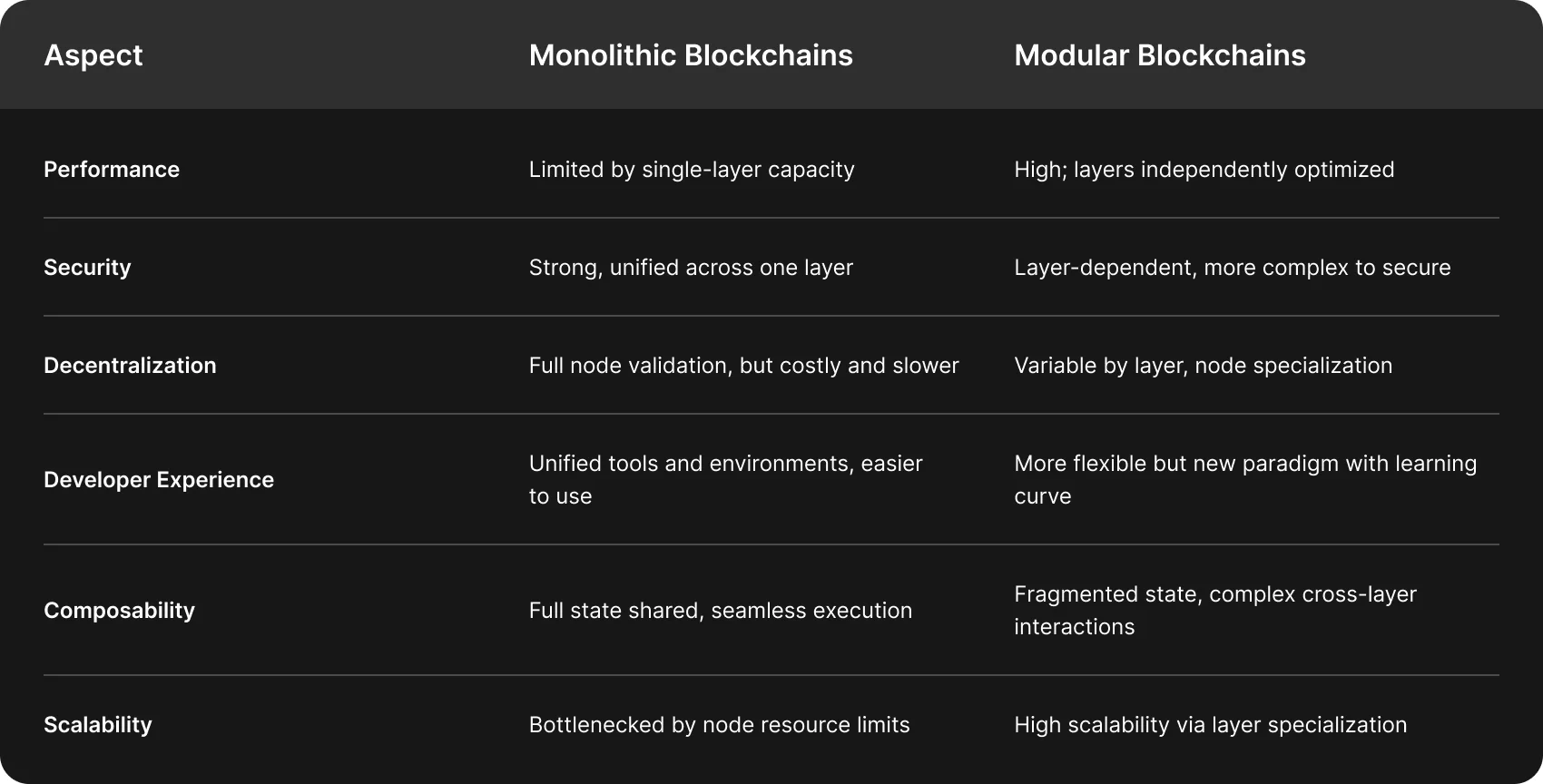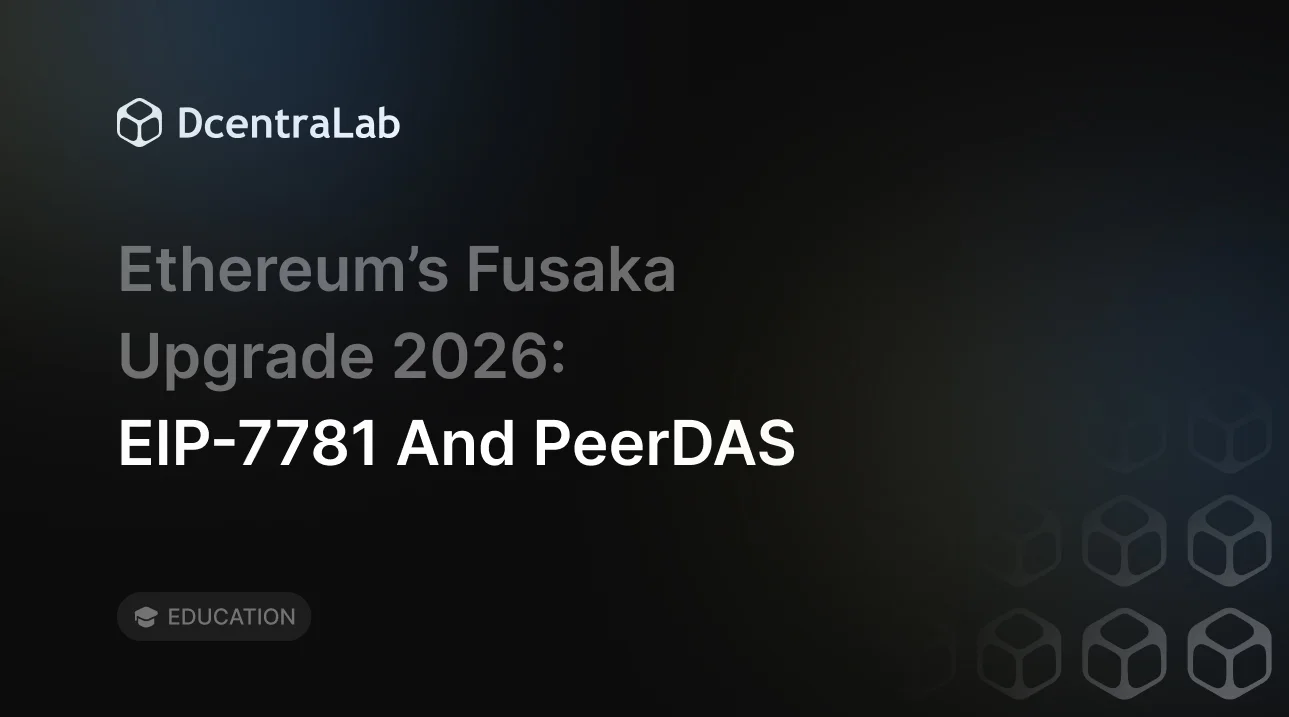Modular vs. Monolithic: 'Data Availability' & the Future of Blockchain Scaling

tl;dr
- Blockchain architecture is shifting from monolithic to modular designs to overcome scalability and cost limitations.
- Monolithic chains like Bitcoin, Ethereum (pre-rollups), and Solana handle execution, consensus, and data availability on one layer.
- Modular blockchains separate these functions, improving flexibility, performance, and customization.
- Data availability (DA) is central to this new model, ensuring transaction data is published, verifiable, and accessible without overloading nodes.
An Introduction to a New Era of Blockchain Architecture
Blockchain architecture has evolved from monolithic designs like Bitcoin, Ethereum (before the merge), and Solana. In monolithic designs, a single layer handles transaction execution, consensus, and data availability.
This approach ensures security but limits scalability, causing congestion and high costs as demand grows. Solana prioritizes speed but sacrifices decentralization, while Ethereum faced scaling challenges.
Modular blockchains address these issues by separating functions into distinct layers, optimizing scalability and flexibility.
A key innovation is data availability as a dedicated module, enabling efficient data storage and access. Techniques like data availability sampling ensure security without burdening nodes, fostering scalable, resilient blockchain ecosystems.
What Are Monolithic Blockchains?
Monolithic blockchains are architectures where all core functions, including transaction execution, consensus, and data availability, are processed on a single layer. This unified design ensures that every node in the network validates, processes, and stores all transactions and data, creating a cohesive system.
Prominent examples include Bitcoin, Ethereum (pre-rollup era), and Solana, each relying on this structure to maintain security and decentralization. The monolithic approach offers simplicity, as all operations occur within one framework, making development and security straightforward.
Bitcoin’s robust security and Ethereum’s developer-friendly ecosystem highlight these strengths. Additionally, the unified design fosters trust, as all nodes share identical responsibilities, enhancing decentralization in some cases.
However, monolithic blockchains face significant scalability limitations. As transaction volumes grow, nodes must handle increasing computational and storage demands, leading to network congestion, higher fees, and slower processing. Solana, designed for high throughput, mitigates this with powerful nodes but sacrifices decentralization and risks outages due to hardware demands. Ethereum struggled with scaling before adopting rollups, as its single-layer design couldn’t efficiently handle surging user activity.
These challenges have driven the shift toward modular architectures, which separate functions to improve scalability and flexibility without compromising security.
Modular Blockchains - A Paradigm Shift
Modular blockchains revolutionize traditional designs by separating core functions, execution, consensus, settlement, and data availability into distinct layers, each optimized independently.
The execution layer processes transactions and smart contracts, managing state changes. The consensus layer ensures network agreement on transaction validity and order. The settlement layer finalizes transactions and resolves disputes, anchoring interoperable chains or rollups. The data availability layer ensures transaction data is published and accessible, alleviating storage bottlenecks.
Celestia pioneered this approach as the first modular blockchain, focusing solely on data availability. It allows appchains and rollups to publish data securely while using separate consensus or execution layers.
Following Celestia, other blockchains integrated a modular design. Berachain emphasizes high-performance execution, and Manta Network integrates privacy-focused execution with interoperability. Ecosystems like Polkadot, Cosmos, and Ethereum’s EigenDA further adopt modular principles, enhancing customization.
The Role of Data Availability (DA) in Modular Scaling
Data availability (DA) is a cornerstone of modular blockchain design, enabling scalable, secure, and decentralized systems. This section will explore DA’s critical role, how these layers empower rollups, and their distinction from other blockchain functions.
What Is Data Availability and Why Is It Critical?
Data availability ensures all blockchain transaction data is published and accessible, allowing validators and users to independently verify transactions and network state. Without DA, missing data could enable fraud or censorship, undermining blockchain’s trustless verification principle. DA is critical for maintaining security, integrity, and decentralization, ensuring every node can confirm the correctness of blocks without relying on unverified sources.
DA Layers: Celestia, EigenDA, and Rollup Security
Dedicated DA layers like Celestia and EigenDA specialize in ensuring transaction data is available without burdening nodes with full storage. Celestia, the first modular blockchain, focuses solely on DA, enabling rollups and appchains to publish data securely while offloading execution and consensus. EigenDA enhances Ethereum’s Layer 2 scalability by providing similar DA services. Rollups like Arbitrum and Optimism process transactions off-chain but rely on DA layers to publish data, ensuring verifiability and security while boosting throughput.
DA Versus Other Layers
Unlike execution layers (processing transactions), consensus layers (ordering transactions), or settlement layers (finalizing transactions), DA layers focus on data accessibility. They enable scalable rollups by offloading storage, ensuring security without compromising speed, and complementing other layers for a modular, efficient blockchain ecosystem.
Modular vs. Monolithic - Key Differences and Tradeoffs
Monolithic blockchains (e.g., Bitcoin, Solana) integrate execution, consensus, data availability, and settlement into one layer. However, in this design, scalability suffers with high transaction loads, causing congestion and fees. Developers benefit from unified tooling but face limitations as demand grows.
Modular blockchains separate these functions, enhancing scalability by optimizing layers independently. Rollups process transactions off-chain, relying on data availability layers. Security depends on layer robustness, and decentralization varies with node roles. Developers face a steeper learning curve but gain flexibility.



.webp)
